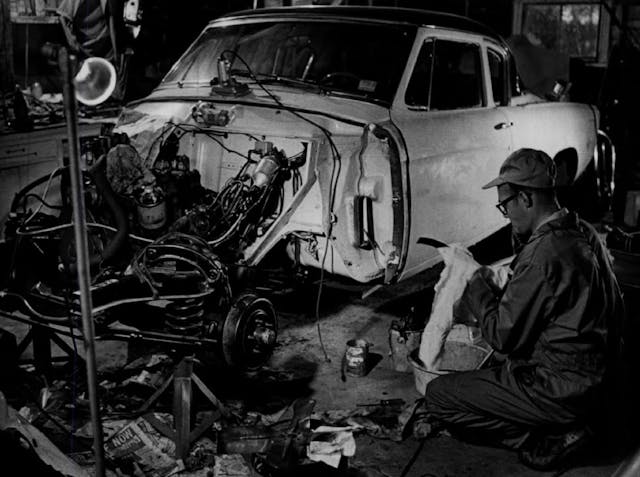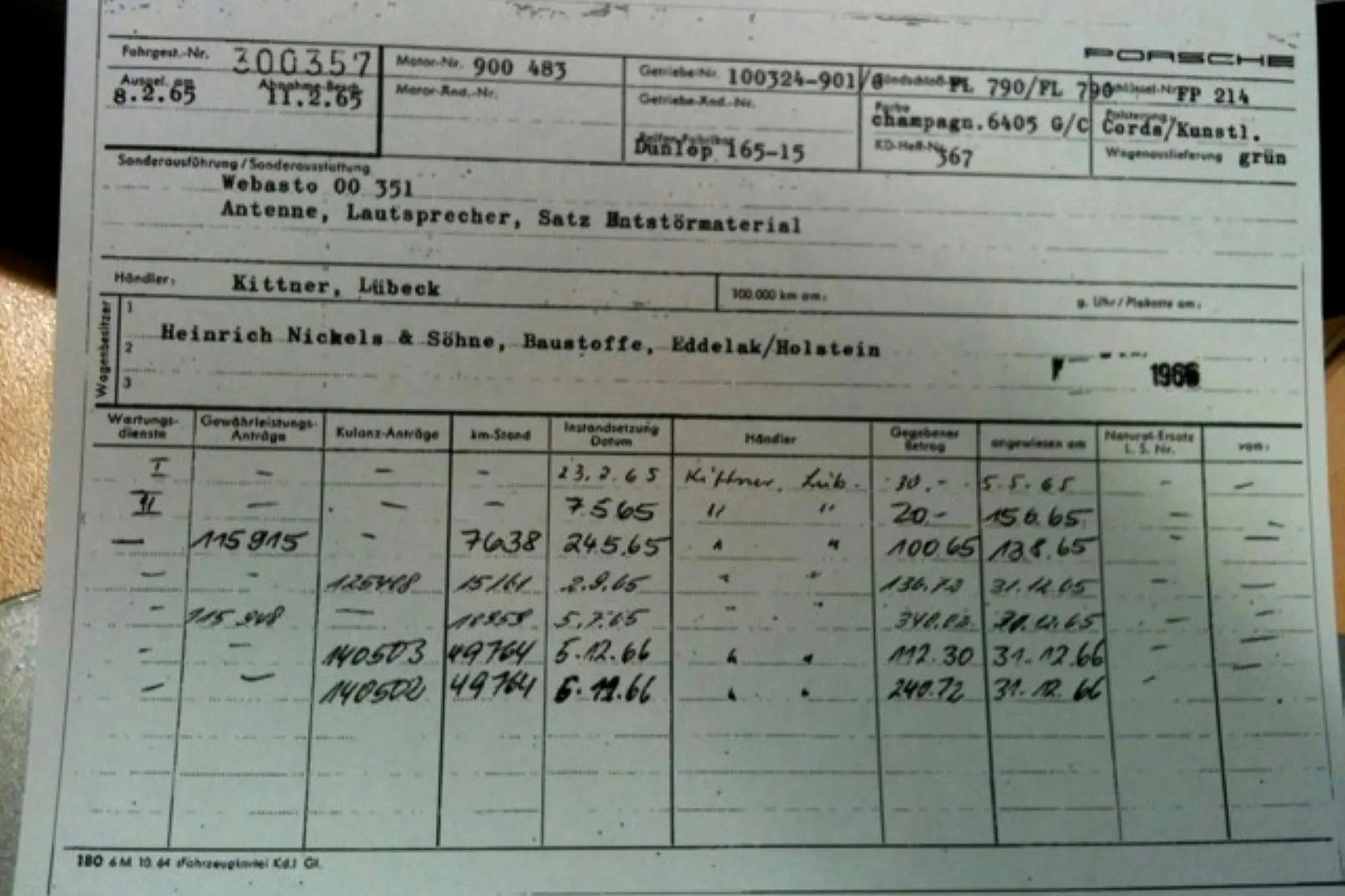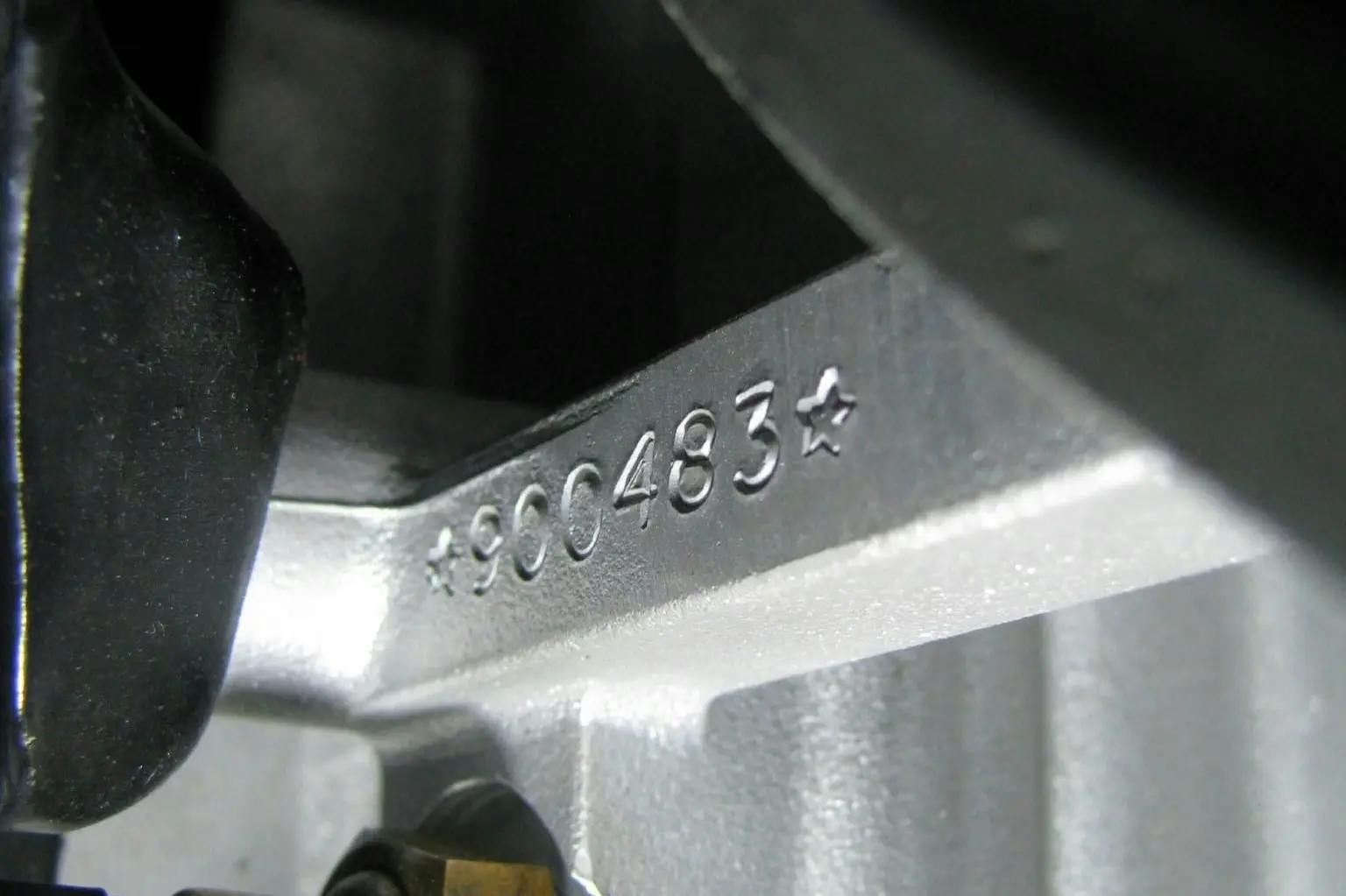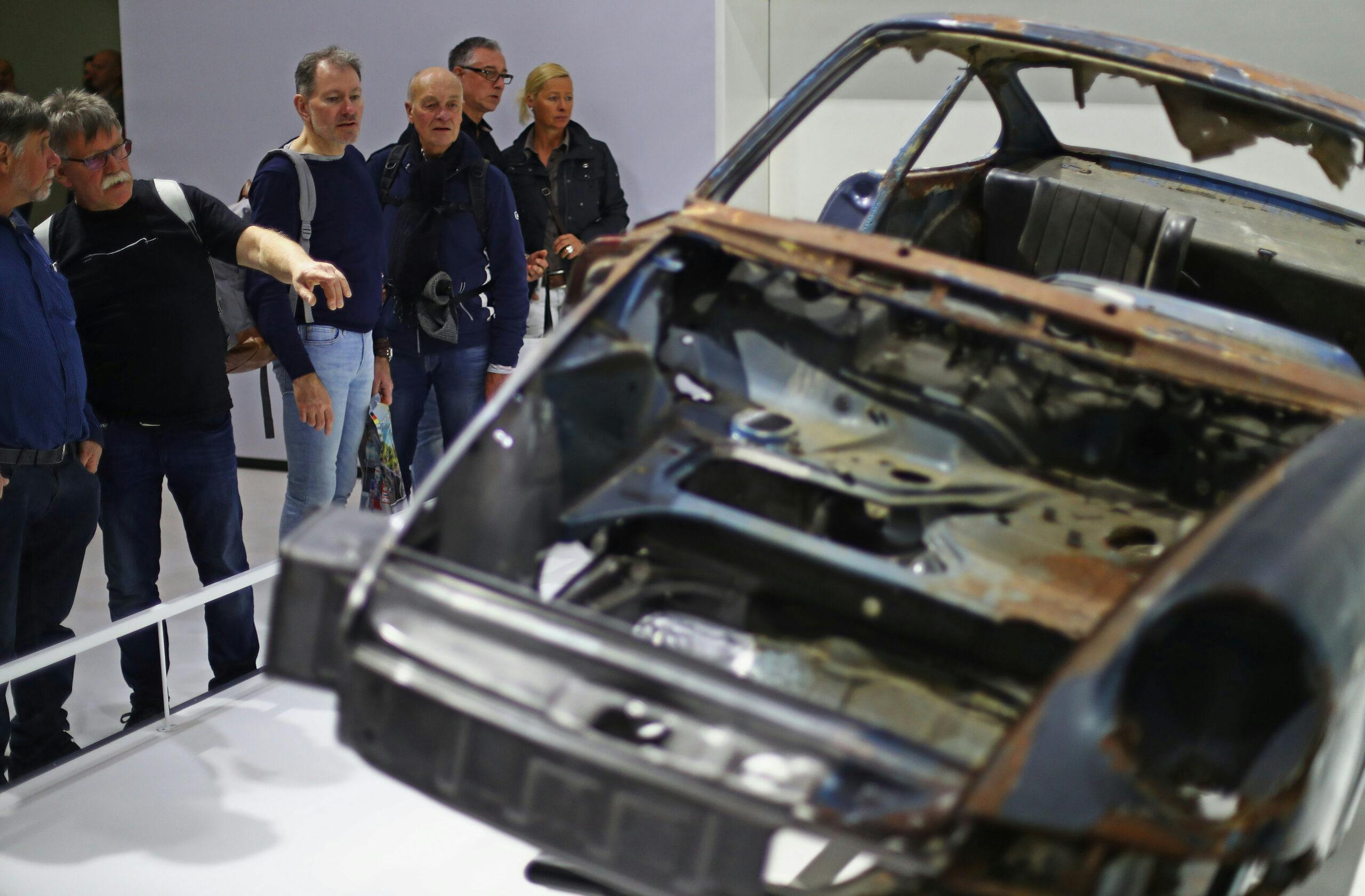Media | Articles
How the pros use forensic analysis to authenticate collector cars
If there’s one inescapable discussion that accompanies any collector vehicle, it’s the degree of its originality and authenticity. Walk through any auction tent or concours and you’ll hear healthy banter about provenance and varying levels of restoration. The topic is often more than idle chat between enthusiasts, though—when it comes to undertaking a truly authentic restoration or making a seven-plus figure purchase, the stakes are much higher. Enter the very specific, detailed world of vehicle authentication and forensics.
This behind-the-scenes work rarely commands attention, and understandably so—vehicle analysis is performed via private consultation, often ahead of a potential transaction. We were curious to better understand the process so we reached out to an industry professional to learn more.
Chris Kramer wears a lot of hats. Headquartered in Cologne, Germany, you can find him working across the globe as a concours judge, automotive historian, marque expert, restoration supervisor, and vehicle evaluator. Specializing in Mercedes-Benz, Porsche, and other German, Italian, French, and British brands, Kramer’s amassed decades of time analyzing and documenting high-end collector vehicles.
That Kramer extends his work to a variety of facets in the industry also says something about the activity of authentication itself: it’s much more than simply determining whether a car is real or a forgery, or if the car has been properly represented by a seller. As with people, any car that lives long enough is bound to have stories. The evaluation process works to understand as many details of a vehicle’s story as possible, and thoroughly establishes the nature of a car at a given moment in time.
Our conversation took the methodical cadence you might expect from someone who analyzes things for a living. Kramer begins by setting the table.
Context
“Cars were basically instruments to take people from one place to another,” he says. “Of course, they had issues and needed to be repaired. In the early age of cars and even into the postwar period, nobody cared about what people would think and do 40, 50, 100 years down the road.”
Indeed, these were days when phrases like numbers matching weren’t even in the lexicon. Decades ago, the work that made a car less original was often considered a good thing. “For example,” says Kramer, “it was known that the four-cam engines on the early Porsche 356 Carreras frequently had issues and would sometimes just blow up, even with low miles, for no reason whatsoever. And when an engine was replaced, people would be happy that the Porsche warranty card would note the date of the repair and what was done to the car.”

That’s one well-documented chapter in a car’s life—there are usually countless more unrecorded or poorly noted events that also add indelible impressions. Time spent aging in the elements, fender benders, personalization or restorations with parts from another car—often done with the pure intent of keeping the vehicle functional and on the road—all those moments take the car steps further from the state in which it left the factory and create more layers for authenticators to sift through.
The human element
Because of these untold numbers of variables, he articulates that this work requires extensive analytical prowess only gained by experience. He begins by highlighting the level of specialized knowledge required. “An expert is somebody with a universal knowledge,” he asserts. “I think you can only develop specialty knowledge on certain vehicles.” That includes everything from the ability to analyze factory markings the way you’d authenticate an autograph, knowledge of the how the car was assembled, and an encyclopedia of minutiae that’s on a level with—or sometimes exceeds—those who originally built these cars.
Another key human factor in this work is the need for a common language. Shared definitions enable absolutely clear understanding between the evaluator and client, and buyers and sellers. “This is fundamental,” asserts Kramer. “The car that rolls off the assembly line is the authentic vehicle and it’s original. Once it’s repaired, even if it’s just an exchange of some filters, it remains authentic but is not completely original any longer. People mix up these terms and others regularly. You need to start with definitions before you go into the forensic work so people are on the same page.”
With that shared language now in place, the client and the advisor can work together to establish an objective and set expectations.
The analysis itself
The work can now begin, and it typically kicks off with documentation. There are assurances and flags in a car’s historical records, and they help reveal any potential pitfalls or areas that will need special attention. “Where has the car been? How did the car live? Do we have gaps in the records? Do we know when the car was restored and who restored it?” Kramer rattles off a laundry list.
Against the evaluator’s knowledge of the car, the database resources available, and of course the car’s own paperwork, the car gets checked. Any identification numbers on the car will be confirmed, their locations verified. Stampings are analyzed for font and positioning—this is a prime example where a database is essential for visual reference.
In an authentication-related evaluation (vs. a restoration-driven one, which by its nature will involve invasive forensic efforts), this is about the time that things can transition to a more heavy-duty effort. “When you find something you think is fishy, you can elevate from one level to the other,” says Kramer. “You would first check the numbers. Then if you still think that there’s something wrong, then you can say, okay, we need to do a material analysis.”
Using magnetic imaging technology originally used for tracing guns that had their serial numbers filed off, authenticators can read original stampings even if new ones have been made over them. Welds are reviewed to ensure the end product could have been created with era-appropriate tools. Panel thickness is measured extensively.
If further analysis is required—for instance if the evaluation calls for an effort to determine the age of the metal—specialists are often called in. It’s generally possible to date steel to within 10-15 years of its original production via carbon analysis, though reutilization of older material appears to complicate matters. Further analysis of the metal’s composition, including for arsenic levels, can offer additional insight, especially on Prewar cars.
In order to analyze a vehicle’s paint, a small sample is taken from a hidden place. That sample is then subjected to a variety of tests and compared to existing data. The layers of material are analyzed and delineated, and ultimately help more completely articulate the car’s history.
These examples barely skim the surface of the effort performed by folks like Kramer and the analysts he works with, and by larger organizations like Mercedes Classic. It’s an intensive process can take a significant amount of time, and no small amount of money, too.
Peace of mind
The collector car market continues to grow, and though prices have cooled of late, there’s no shortage of expensive, rare cars and new buyers entering the market. Knowledge is king, and a detailed understanding of the provenance of a potential purchase can put a much finer point on what it’s worth.
From a restoration perspective, at least for those concerned with authenticity, a forensic deep dive is a critical step in ascertaining how to move forward with the work.
Then there is the occasional surfacing of counterfeit cars. No one wants to spend big money on something only to find that another car with the same identification number is already registered to someone else. It’s a rare occurrence, and there’s no sure-fire way to guarantee a fake won’t successfully slip into the market, but fortunately, buyers have preventative measures.
We frequently encourage those in the hobby to do their own research before hopping into the market. Sometimes, though a genuine, authentic professional is the best bet.
***
Check out the Hagerty Media homepage so you don’t miss a single story, or better yet, bookmark it. To get our best stories delivered right to your inbox, subscribe to our newsletters.









This is not unlike document or art forensic analysis. Different ingredients have been used in the production of paper, ink, canvas, paint, etc. so there is an expectation about what would or would not be present in an item from a given time period. For the vast majority of automobiles, this kind of analysis isn’t necessary, but when a rare vehicle needs to be authenticated, it makes sense.
I find it interesting and sad when people try to pass on a vehicle as something it isn’t .
Your comment is awaiting moderation. – Twice today!
Most excellent! Thanks
I always get a kick out of “barn finds”, “covered with 50 years of dirt”, I always thought someone can authenticate the dirt and if that is not true those that pass it off as such should be prosecuted for false documentation or other applicable laws. Now, I know there are those out there that are treating this scientifically. Kudos to them.
This is the side of collecting that I don’t really get. I buy cars because I like them and want to drive them.